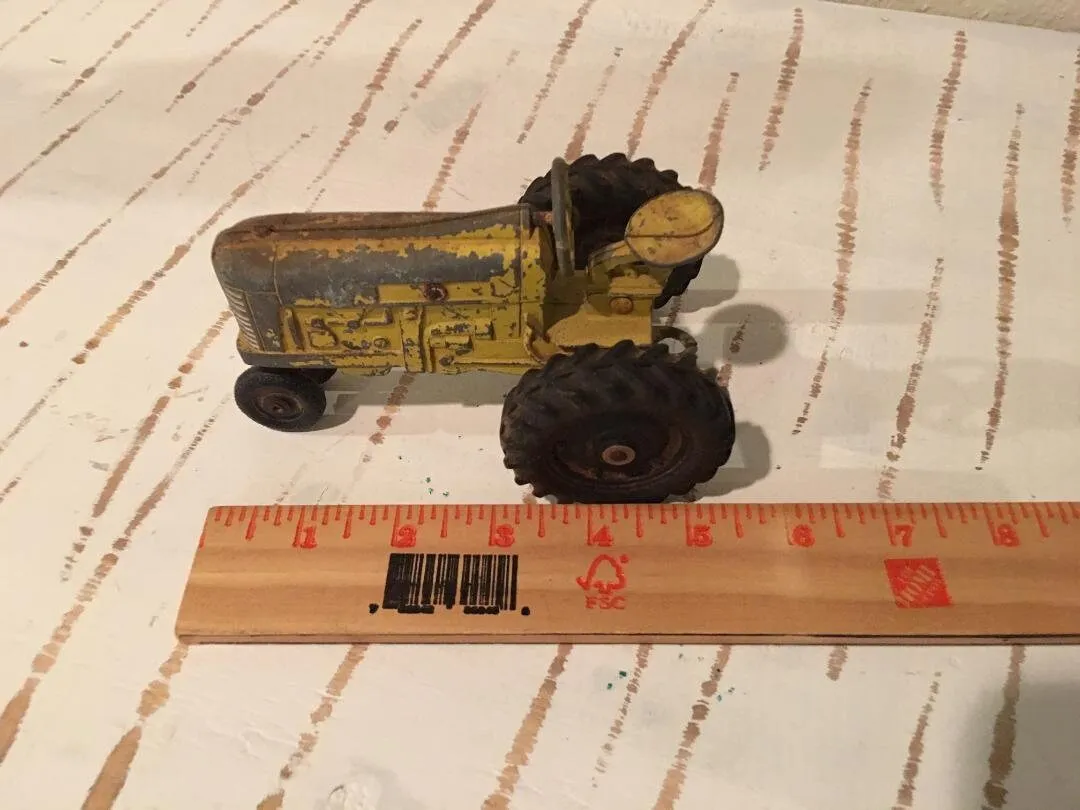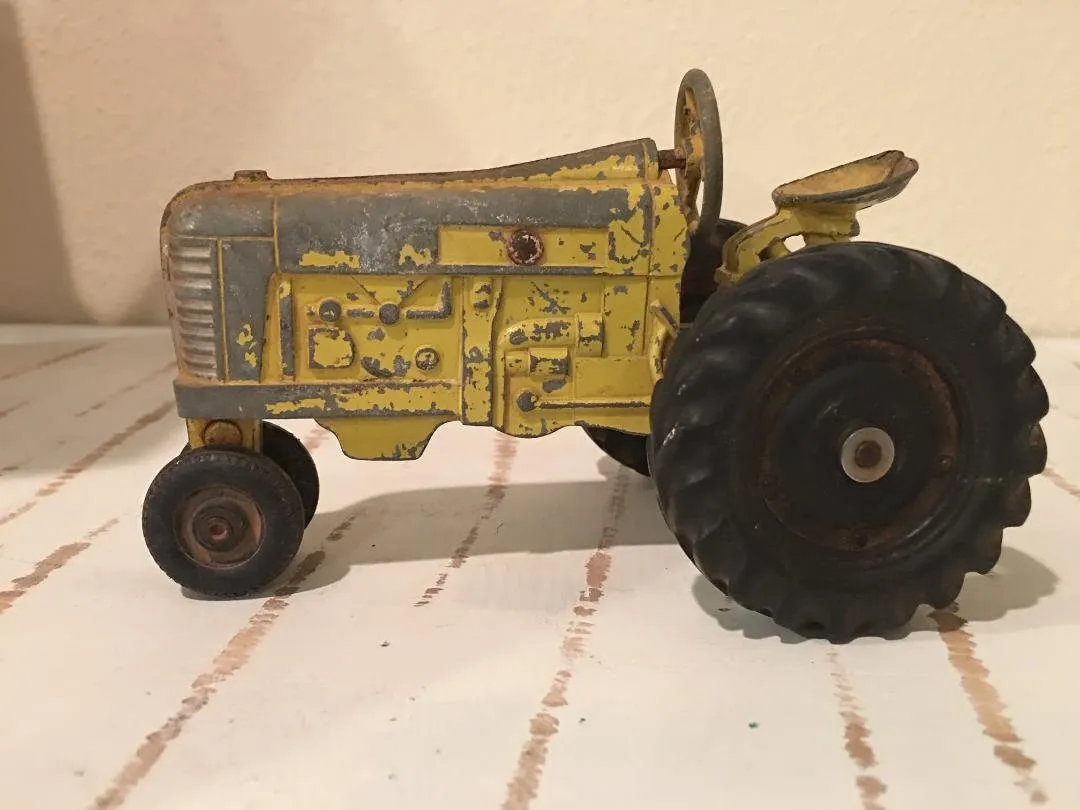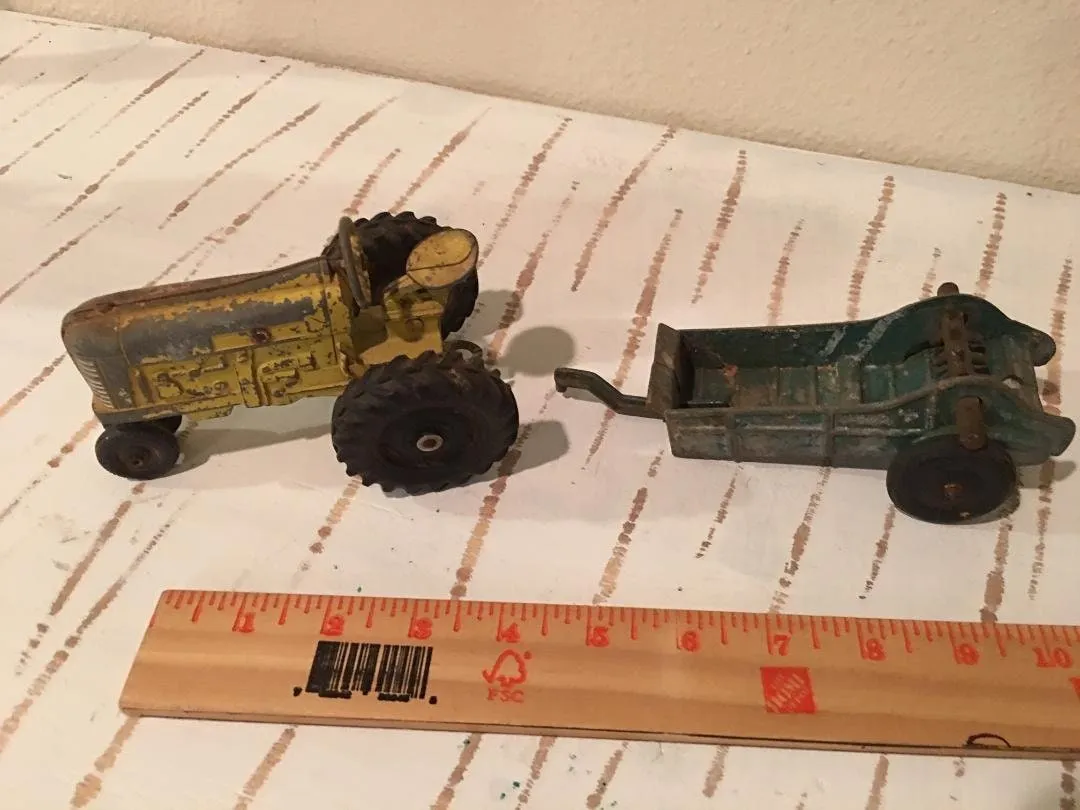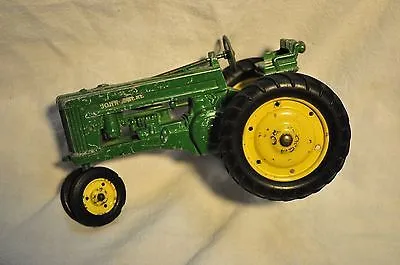Diecast metal toy tractors have captured the hearts of collectors for generations. These miniature marvels offer a unique blend of nostalgia, craftsmanship, and investment potential. From meticulously crafted replicas of iconic farm machinery to rare and valuable limited editions, the world of diecast tractors is vast and fascinating. This article will delve into the world of diecast tractors, providing key insights for both seasoned collectors and those just starting their journey. Get ready to explore the history, features, and the top facts every collector should know about these treasured toys.
The History of Diecast Tractors
The history of diecast tractors is a testament to the enduring appeal of agricultural machinery and the art of miniature replication. The early days of diecast toy production saw the emergence of several pioneering companies that laid the foundation for today’s thriving market. These companies, often driven by innovation and a passion for detail, began producing models that captured the essence of real-world tractors, from the sturdy chassis to the intricate engine details. This period was characterized by a focus on creating durable and affordable toys, which quickly gained popularity among children and adults alike. The evolution of diecast tractor production mirrored the advancements in agricultural technology, with each new model reflecting the latest innovations in tractor design.
Early Diecast Tractor Production
Early diecast tractor production was marked by a spirit of ingenuity and a commitment to quality. Companies like Dinky Toys and Corgi, among others, were at the forefront, experimenting with different materials and manufacturing techniques. Initially, diecast models were relatively simple, focusing on basic shapes and designs. However, as technology advanced, so did the complexity and detail of the tractors. These early models are now highly sought after by collectors, representing a significant piece of toy history. The materials used, such as zamak alloy, ensured durability, allowing these toys to withstand the test of time. The early production runs often featured hand-painted details, adding to their unique charm and value.
The Rise of Popular Diecast Brands

The popularity of diecast tractors gave rise to several iconic brands that continue to be revered by collectors today. Brands such as Ertl, Joal, and Siku emerged as major players, expanding the range of available models and setting new standards for detail and accuracy. Each brand brought its own unique approach to design and manufacturing, resulting in a diverse and exciting market for collectors. The rise of these brands coincided with a growing interest in collecting, with enthusiasts seeking out rare and limited-edition models. The competition among these brands fueled innovation, leading to increasingly detailed and realistic diecast tractors. These manufacturers also licensed the official tractor models, adding realism.
Key Features of a Diecast Metal Toy Tractor
Diecast metal toy tractors are admired for their intricate features, capturing the essence of their full-sized counterparts in remarkable detail. The materials used, the scale variations, and the level of authenticity all contribute to their collectibility and appeal. Understanding these key features is essential for anyone looking to start or expand their diecast tractor collection. From the type of metal used to the precision of the detailing, each element plays a crucial role in determining the value and desirability of a model.
Material and Construction
The material and construction of a diecast tractor significantly impact its durability and aesthetic appeal. Diecast zinc alloy, often referred to as zamak, is the primary material used, known for its ability to capture fine details and its robustness. The manufacturing process involves injecting molten metal into molds, which allows for intricate designs and precise features. The quality of the paint and the method of assembly also play a crucial role, with higher-quality models often featuring hand-painted details and careful construction. Some models may also include plastic components for certain parts, such as tires or cab interiors, to enhance realism and functionality. The better the material, the better the long-term value.
Scale and Size Variations

Diecast tractors are produced in various scales, each offering a unique perspective on the real-world machinery. Common scales include 1:16, 1:32, and 1:50, with each scale catering to different collector preferences and display needs. Larger scales, such as 1:16, provide a greater level of detail and are often favored by serious collectors. Smaller scales, like 1:50, offer affordability and allow for larger collections within a limited space. The choice of scale depends on individual preferences, available display space, and the specific models a collector is interested in. Some collectors focus on a specific scale, while others collect a variety of scales to showcase different aspects of tractor design and history.
Authenticity and Detailing
Authenticity and detailing are key factors that distinguish high-quality diecast tractors from less desirable models. The best models accurately replicate the features of real-world tractors, including the engine, cab, wheels, and other components. Attention to detail extends to the paint finish, decals, and other small elements that enhance the realism of the model. Many manufacturers use original blueprints and photographs to ensure the accuracy of their models, making them highly prized by collectors. Features like movable parts, detailed interiors, and realistic weathering effects further add to the authenticity. The more realistic the detailing, the higher the value and collectibility of the model.
Top 5 Collectible Diecast Tractor Facts
Knowing these top facts is very important for anyone involved or interested in collecting diecast tractors. The market has been steadily growing and these factors play a part on the market, collectibility and more.
Fact 1 Rarity and Value

Rarity significantly impacts the value of diecast tractors. Limited edition models, those produced in small quantities, or those with unique features are often highly sought after by collectors. The value is determined by a combination of factors including rarity, condition, historical significance, and the demand from collectors. Some rare models can fetch prices far exceeding their original retail value. The condition of a tractor also plays a crucial role, with mint-condition models commanding the highest prices. The scarcity of a particular model often drives up its price, making it a valuable addition to any collection.
Fact 2 The Most Sought-After Models
Certain diecast tractor models consistently attract the attention of collectors due to their historical significance, rarity, or exceptional detailing. Models from iconic brands like John Deere, Massey Ferguson, and Ford are often highly coveted. Limited-edition models, especially those produced for specific events or in collaboration with renowned designers, are also highly sought after. The most sought-after models often represent significant milestones in tractor history or feature unique design elements. Collectors actively search for these models, often willing to pay a premium to add them to their collections. Models of historically important or innovative tractors will be a great choice.
Fact 3 The Role of Original Packaging
Original packaging plays a vital role in preserving and enhancing the value of diecast tractors. Collectors place a premium on models that come with their original boxes, as these boxes often contain valuable information, such as the model number, production date, and manufacturer details. The condition of the box is also considered, with boxes in excellent condition contributing significantly to the overall value. Original packaging provides an added layer of authenticity and helps to protect the model from damage, further increasing its desirability. Models with their original packaging tend to be more valuable.
Fact 4 Restoration vs Original Condition

The debate between restoring a diecast tractor and preserving it in its original condition is an important one for collectors. While restoration can enhance the appearance of a model and potentially increase its value, it can also diminish its authenticity if not done correctly. Models in original, unrestored condition often have greater value, especially if they are rare or have historical significance. The decision to restore a model depends on individual preferences, the condition of the model, and the desired outcome. Expert restoration can add value to a model, but it should be carried out carefully to avoid damaging the original features and characteristics.
Fact 5 Current Market Trends
Understanding current market trends is essential for collectors looking to invest in diecast tractors. The market is constantly evolving, with new models, brands, and collecting preferences emerging. Keeping track of auction results, online sales, and collector forums can provide valuable insights into which models are in high demand and what prices they are commanding. The value of certain models can fluctuate based on collector interest, historical events, and changes in the agricultural industry. Staying informed about market trends allows collectors to make informed decisions and build a valuable collection. Social media platforms and collecting groups are great places to stay up to date.
Where to Buy Diecast Tractors
Finding the right place to buy diecast tractors is as important as knowing what to collect. Various avenues are available, each with its unique advantages and considerations. Knowing where to start can help you find the best models for your collection.
Online Marketplaces

Online marketplaces offer a vast selection of diecast tractors, allowing collectors to browse a wide range of models from different sellers. Platforms like eBay and specialized toy auction sites provide access to both new and vintage models. Online marketplaces offer convenience and often feature detailed descriptions, photos, and seller ratings, but it is crucial to carefully review the seller’s reputation and the model’s condition before making a purchase. Be sure to use a safe payment method and to ask questions about the model’s history and condition. Checking the sellers’ reviews and ratings is a very good option.
Specialty Toy Shops
Specialty toy shops are a great option for diecast tractors. These shops often have a curated selection of models, providing collectors with a hands-on experience and expert advice. Specialty shops allow you to examine the models closely before purchasing, and they may also offer a selection of rare or vintage models. The knowledgeable staff can offer information about the models and the history of the tractors. Collectors can build relationships with these shops, potentially gaining access to exclusive models or early previews of new releases. These shops may also offer restoration services or advice. The prices might be higher, but there is a higher chance of having authentic products.
Collecting Diecast Tractors Tips
Once you start collecting diecast tractors, it is important to learn how to care for the models and how to store them safely. A well-cared-for collection will bring many years of enjoyment. Follow these tips to keep your collection in excellent condition.
Storage and Display

Proper storage and display are crucial for preserving the condition and value of your diecast tractor collection. Models should be stored in a cool, dry place away from direct sunlight, which can fade the paint and damage the materials. Display cases or shelves with protective covers can prevent dust accumulation and accidental damage. Consider using acid-free tissue paper to wrap individual models, especially those in original boxes. Organize your collection by brand, scale, or type to make it easier to manage and display.
Maintaining Your Collection
Regular maintenance will keep your diecast tractor collection in excellent condition. Dust the models regularly with a soft cloth or a brush, and avoid using harsh cleaning agents or chemicals. Inspect the models periodically for any signs of damage, such as scratches, dents, or loose parts. If necessary, you can gently clean the models with a mild soap solution. For any repairs or restoration, consult a specialist to avoid damaging the model. By following these maintenance tips, you can ensure that your diecast tractors will remain in excellent condition for years to come.
Diecast metal toy tractors offer a fascinating and rewarding collecting experience, combining history, craftsmanship, and investment potential. By understanding the key features, the market trends, and the best practices for buying and maintaining a collection, you can embark on a journey filled with discovery and enjoyment. Whether you’re a seasoned collector or just starting, there is something truly special about these miniature marvels. Happy collecting!
